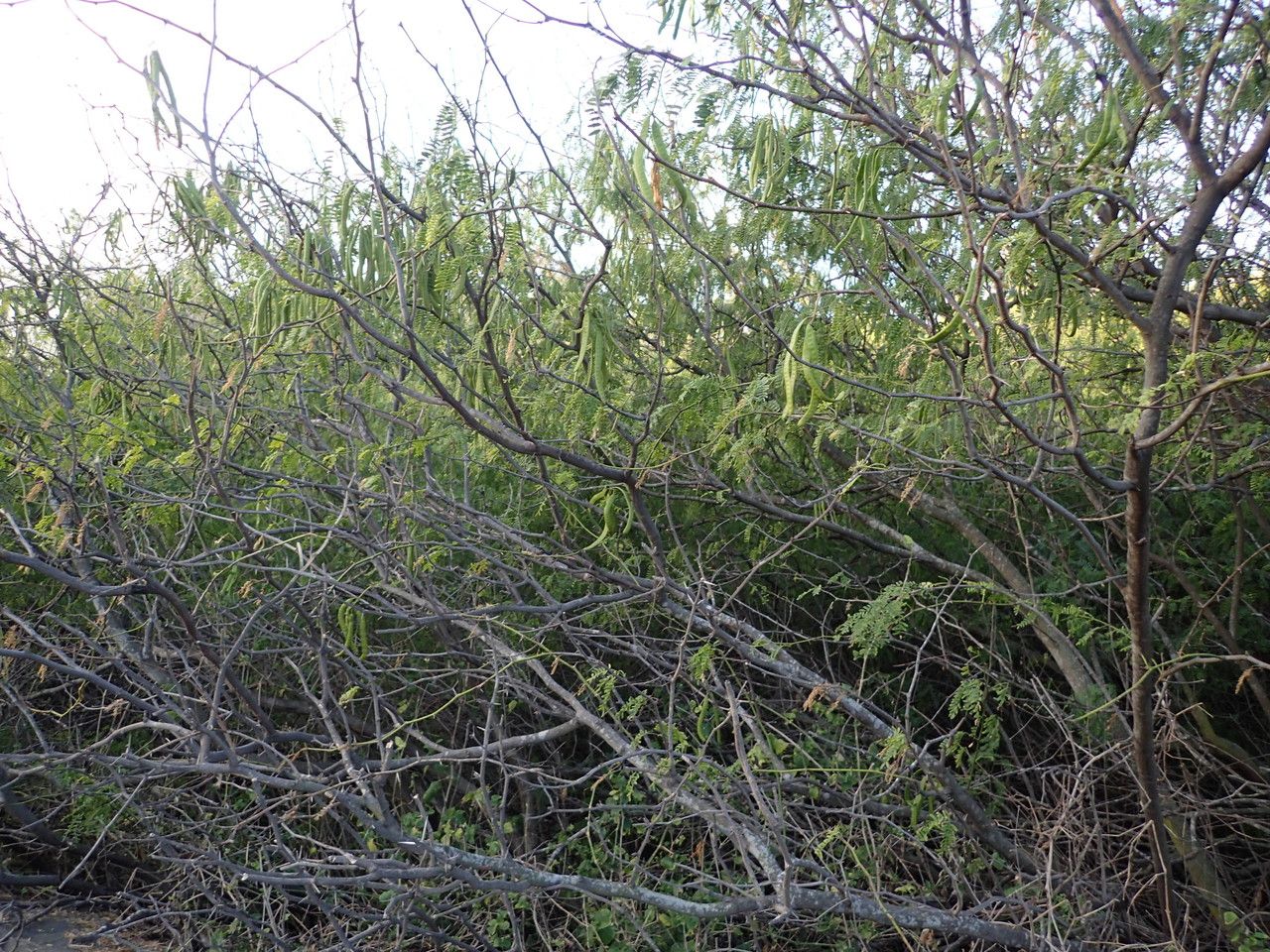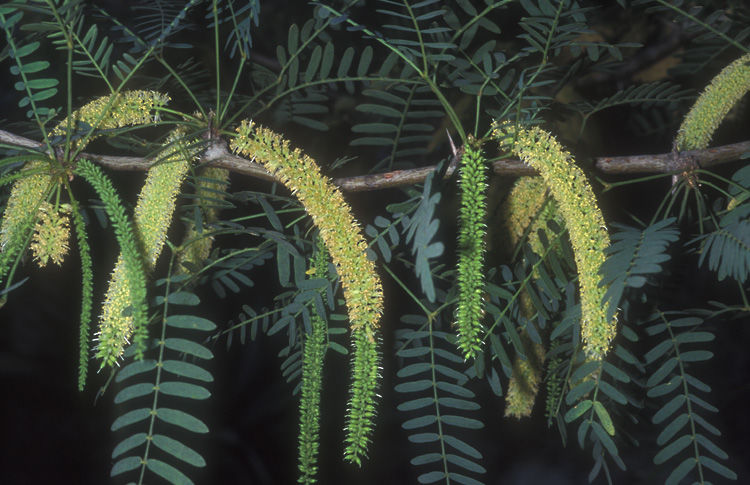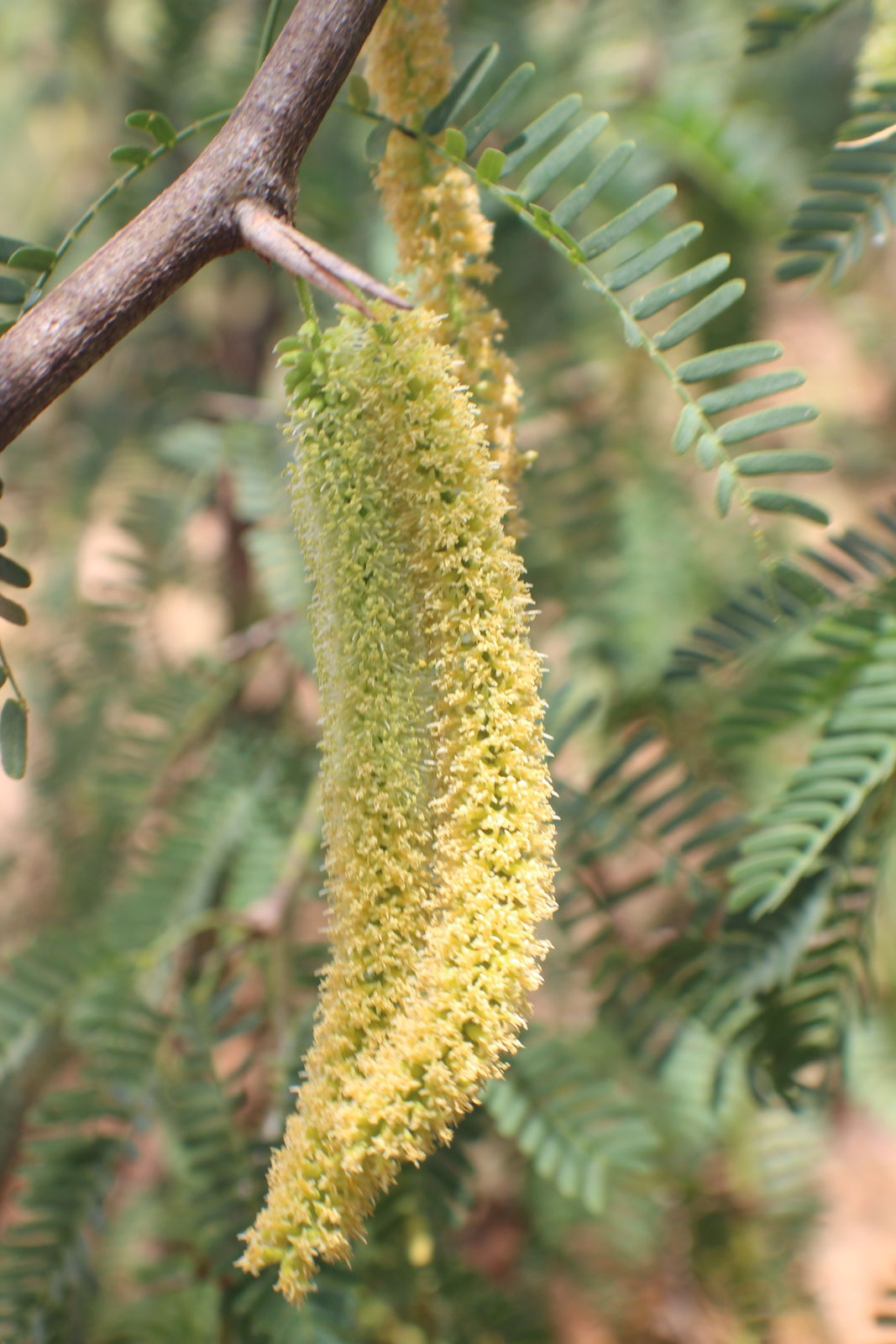Mesquite
prosopis juliflora
Also known as: ["Algarrobo","Algarrobo blanco","Algarrobo del desierto","Algarrobo negro","Algarrobo silvestre","False carob","Honey mesquite","Prosopis"]
Overview
A drought-tolerant, thorny, deciduous tree native to the Americas, widely naturalized in arid and semi-arid regions globally. Known for its long taproots, nitrogen-fixing ability, and edible pods.
Benefits & Perks
["drought tolerant","shade tolerant","wildlife attractant (bees, butterflies, birds)"]
Botanical Classification
| Phylum: | Magnoliophyta |
| Class: | Magnoliopsida |
| Order: | Fabales |
| Family: | Fabaceae |
| Genus: | Prosopis |
| Botanical Name: | Prosopis juliflora |
Plant Characteristics
Basic Information
- Category: Trees
- Suitable Location: arid or semi-arid regions, open field or container in full sun
- Suitable For:
- Is Weed: No
- Allergenicity: moderate
Environmental Needs
- Climate: {"temperatureRange":"10–50°C"}
- Hardiness: {"zones":"8–11"}
- Misting: rarely required
- Drainage: Fast-draining to prevent waterlogging.
- Soil Type: Well-draining, sandy or loamy soil with some organic matter.
Maintenance Level
- Maintenance Level: very low
- Toughness Level: very high
- Pruning Frequency: Annually or as needed to maintain shape and health.
- Pruning Intensity: Moderate to heavy, depending on desired shape and size control.
Care Details
Ideal Sunlight Coverage:
Full sun (6–8 hours of direct sunlight daily). Tolerates intense heat and arid conditions.
Sunlight Tolerance Tips:
Acclimate gradually if moving from shade to full sun. Protect from harsh midday sun in extreme heat. Suitable for both indoor (bright, sunny windows) and outdoor placement.
Care Requirements
Care Difficulty
moderatemoderate
Sunlight
full sun
Maximize light exposure; rotate plant for even growth; avoid sudden light changes.
Watering
every 2–3 weeks during dry periods, less frequently in winter
Water thoroughly until runoff, ensure excellent drainage, and avoid frequent shallow watering.
Soil
well-drained, sandy or loamy soil
pH: Slightly acidic to neutral (pH 6.0–7.5).
Ensure soil dries between waterings; avoid heavy clay soils; amend with organic matter if needed.
Temperature
Thrives in hot climates (20–40°C). Tolerant of mild frosts but prefers warmth.
Protect from frost; ensure good ventilation; adjust watering with temperature.
Fertilizing
rarely required, annually with balanced fertilizer if needed
Fertilize lightly in spring; avoid over-fertilizing; use a balanced formula.
Propagation
Methods
Stem cuttings or seed. Stem cuttings are more common for home growers.
Step-by-Step Propagation Guide
- Take a 10–15 cm cutting.
- Remove lower leaves.
- Apply rooting hormone.
- Plant in medium.
- Maintain humidity.
Best Time: Spring or early summer when the plant is actively growing.
Environment
Warm (20–25°C), humid, and partially shaded conditions.
Medium
Well-draining mix of perlite and peat moss or cactus mix.
Hormone
Rooting hormone is recommended for faster and more reliable rooting.
Timeline
Roots may develop in 4–8 weeks; establishment takes 3–6 months.
Tools Needed
Pruning shears, rooting hormone, small pots, well-draining medium.
Quick Tips
Use healthy, non-flowering stems; maintain consistent moisture; provide bottom heat if possible.
Pruning & Repotting
Pruning Guide
Method
Selective pruning of branches; heading back for compact growth; thinning for light penetration.
Pruning Plan
Prune to control size, shape, and encourage bushier growth. Remove dead or diseased wood.
Tools
Pruning shears, loppers, gloves, disinfectant.
Checklist
Disinfect tools; prune during dormancy; remove dead/diseased wood; shape as desired.
Repotting Guide
Best Season
Spring, before the active growing season begins.
Pot Size
Increase pot size by 2–5 cm in diameter.
Method
Remove plant gently; trim roots if necessary; use fresh, well-draining soil; ensure good drainage.
Suggestions
Repot every 2–3 years or when roots fill the pot. Necessary to refresh soil and provide space.
Checklist
Choose appropriate pot; prepare new soil; handle roots carefully; water after repotting.
Advanced Care Tips
Watering Mastery
Watering Checklist
Check soil moisture before watering; water deeply; ensure drainage; adjust frequency seasonally.
How to Apply Water Properly
Water directly at the root zone, ensuring moisture penetrates deeply. Water early in the morning to minimize evaporation and allow foliage to dry. Ensure excess water drains away to prevent root rot.
Watering Schedule Tips
Water deeply but infrequently, allowing soil to dry completely between waterings. Reduce watering in winter to once every 4–6 weeks, depending on climate and soil conditions.
Soil Improvement
Add perlite or coarse sand for drainage; incorporate compost for fertility.
Temperature Stress Management
Signs of Temperature Issues
Wilting, leaf drop, or stunted growth in cold; scorching or leaf burn in excessive heat.
Cold Stress
Growth slows or halts; may suffer leaf damage or dieback in prolonged cold.
Solution: Move to a warmer location; provide frost protection; reduce watering in cold.
Hot Stress
Leaf scorch, wilting, or reduced vigor in extreme heat without adequate water.
Solution: Provide partial shade during peak heat; increase watering; ensure good air circulation.
Fertilizing Guide
Fertilizing Checklist
Use appropriate fertilizer; follow dilution instructions; fertilize during active growth.
Fertilizing Method
Use a balanced, slow-release fertilizer in spring. Dilute liquid fertilizer to half-strength if needed. Avoid fertilizing in winter.
Common Problems & Solutions
Toxicity Warning
Cats
Slightly ToxicCats may exhibit mild toxicity if they ingest significant amounts of Prosopis juliflora seeds or pods. The plant's compounds can cause mild gastrointestinal irritation and discomfort.
⚠️ Symptoms:
🌿 Toxic Parts:
⚡ Toxic If:
if eaten in large quantities
Dogs
Slightly ToxicDogs may experience mild toxicity if they consume large quantities of Prosopis juliflora seeds or pods. The plant contains compounds that can irritate the digestive system, leading to mild gastrointestinal symptoms.
⚠️ Symptoms:
🌿 Toxic Parts:
⚡ Toxic If:
if eaten in large quantities
Humans
Slightly ToxicProsopis juliflora contains compounds that can be mildly toxic if consumed in large amounts. The seeds and pods may cause gastrointestinal distress and other mild symptoms due to their content of certain alkaloids and tannins.
⚠️ Symptoms:
🌿 Toxic Parts:
⚡ Toxic If:
if eaten in large quantities
Frequently Asked Questions
Q: Is Prosopis juliflora invasive?
A: Yes, it is considered highly invasive in many regions where it has been introduced, outcompeting native vegetation.
Q: Are the pods of Prosopis juliflora edible?
A: Yes, the pods are edible and have been used as a traditional food source in many cultures.
Q: Does Prosopis juliflora fix nitrogen?
A: Yes, like many legumes, it has the ability to fix atmospheric nitrogen, enriching the soil.
Quick Reference
| Family: | Fabaceae |
| Care: | moderate |
| Light: | full sun |
| Water: | every 2–3 weeks during dry p |
Get Expert Care Tips
Download the Plantious app for personalized care reminders and plant identification!
Google Play App Store








